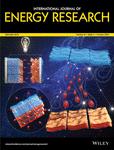Water distribution and carbon corrosion under high current density in a proton exchange membrane fuel cell
Funding information: Fundamental Research Funds for the Central Universities, Grant/Award Number: 2019kfyRCPY09; Wuhan Applied Foundational Frontier Project, Grant/Award Number: 2020010601012205; Natural Science Foundation of Hubei Province, Grant/Award Number: 2020CFA040; National Natural Science Foundation of China, Grant/Award Number: 51776144; National Key Research and Development Program of China
Summary
Carbon corrosion in the catalyst is an important factor limiting the lifetime of proton exchange membrane fuel cells (PEMFCs). The water distribution inside the PEMFC directly determines the carbon support's corrosion rate in the catalyst. This study first investigates the water mole fraction distribution in the catalyst under different operating conditions, such as relative humidity (RH), temperature, pressure. It then divides the catalyst into different flooded areas according to the relationship between the water vapor partial pressure and saturated vapor pressure. Finally, it investigates the carbon corrosion characteristic of each region. The carbon corrosion of the catalyst is mainly divided into the corrosion in the non-flooded area and the corrosion in the flooded area. The results show that the decay rate of carbon support is around 4% after 5000 hours of operation in the non-flooding area. However, the degradation of the carbon support in the flooded area after 100 hours is as high as around 97.76%. Therefore, how to avoid flooding is the important issue that needs to be considered in the PEMFC. Moreover, increasing the pressure and RH promote the carbon corrosion in both cases, while increasing the temperature increases the carbon corrosion reaction rate, but it is beneficial to alleviate water flooding.
Highlights
- Water distribution and carbon corrosion under different working conditions.
- Divide the catalyst into varying levels of flooded areas.
- The carbon corrosion degree in the flooded area is as high as 97.76% after 100 hours.
- Increasing temperature increases the corrosion rate, but alleviates water flooding.
CONFLICT OF INTEREST
The authors declare that they have no competing interests.
Open Research
DATA AVAILABILITY STATEMENT
The data that support the findings of this study are available from the corresponding author upon reasonable request.




